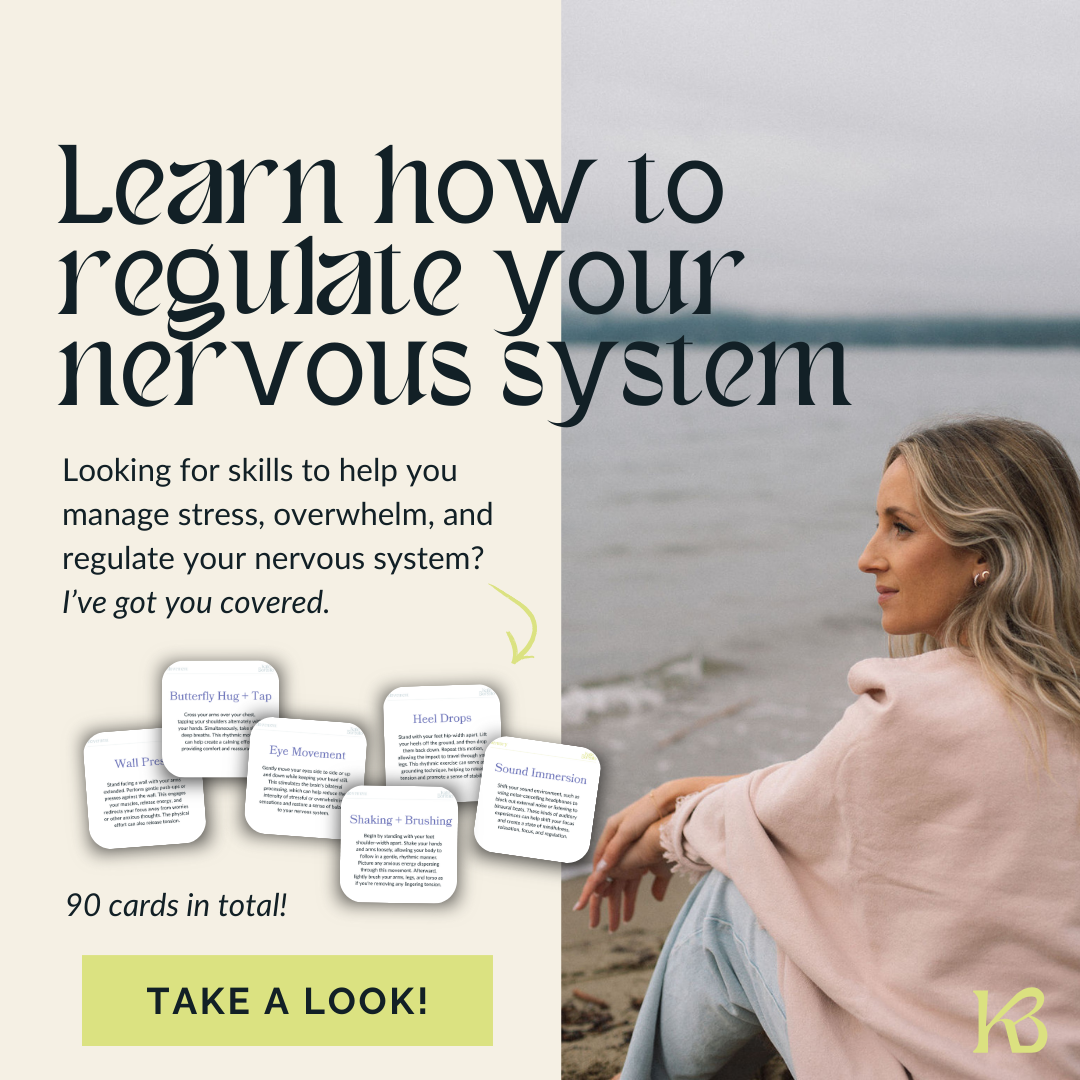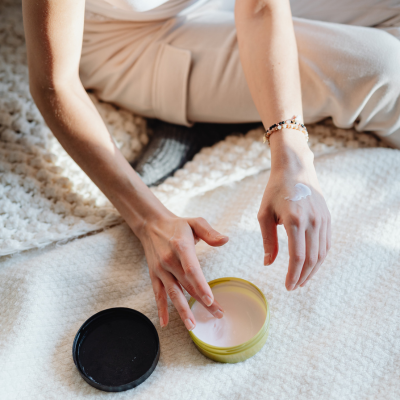We all have different levels of stress that we can tolerate. You may already know your triggers and which stressors just drive you nuts. But on the other hand, there’s a certain level of stress where you can just shrug your shoulders and take it all in your stride.
Mountains of unwashed dishes and a week’s worth of meal prep to do? No biggie. Add screaming kids, an annoyingly loud sports game in the background and you’re running late to an appointment and that could cause a meltdown.
Maybe you’ve seen that meme floating around on social media about how spilling one glass of water can either barely phase you… or totally destroy your day. What that’s getting at is overwhelm, how we handle stress in any particular given moment, and our window of tolerance.

What is the window of tolerance?
There are many ways to understand the window of tolerance. Some might like to think of it as a literal window of what your nervous system can or cannot accept.
Triggers that are manageable allow you to stay inside your window. You simply deal with them, accept them, deal with the minor anxiety they cause, and move on. Those that are too much for you to process though will bring you outside of your window of tolerance—to an overwhelmed or unmanageable and dysregulated state.
You could also think of this concept like a river or container that is holding a normal capacity of water versus one that is overflowing. What are some things in your life that may cause an overflow situation? A baby crying? Family members constantly needing things? Too many deadlines?
It’s important to know that our windows of tolerance aren’t all created equal. Your sister or your best friend might have a much bigger capacity for handling stress than you do. Your spouse or partner may have a much smaller one. Like with all things self-care, having this self awareness and getting familiar with your own window of tolerance is important. For example, say you’re in a new place, there’s tons of noise on the street, your partner keeps asking you questions, and someone continuously keeps ringing the doorbell. That might cause you to flip out. Your super chill friend on the other hand, may barely raise an eyebrow.
What impacts the size of our window of tolerance?
So with that above example, why might it be hard for you to tolerate certain interruptions or annoyances whereas the same triggers may not even bother the next person?
There are so many factors that can impact the size of your window of tolerance. Those can also change over the course of your lifetime. During certain chapters, you may find yourself better able to handle stress. The below list includes some of the main things that could impact you and your nervous system.
- Having a past experience with trauma
- Going through a particularly stressful time (i.e. dealing with financial stress, relationship difficulty, processing birth trauma, loss, moving, adjusting to parenthood)
- Being a highly sensitive person
- Being neurodivergent (i.e. having ADHD or being on the autism spectrum)
- Dealing with a mental health diagnosis like anxiety, depression, or bipolar disorder
- Being physically unwell
- Being pregnant. Yes, pregnancy can increase nervous system reactivity.
Being grounded vs. overstimulated
Ok so you obviously know the difference between feeling calm versus stressed out. But how do you know when you’re in a grounded, regulated state, versus when you’re starting to become dysregulated, versus when you’re out of your window of tolerance entirely? That’s an entire topic on its own, but for now, here’s what you need to know:
Grounded state. This is when you feel calm, cool and collected. You’re relaxed in this state. You’re not running through your list of to-dos, ruminating, worrying, or feeling irritated. You’re happy, balanced and unbothered. You communicate effectively and you are showing up as your best self. This is where you want to be most of the time.
Becoming dysregulated. When your nervous system is working hard and you’re getting close to leaving your window of tolerance, you might feel angry, irritated, weepy, upset, or just generally annoyed. That might not be obvious to anyone around you but you feel tense. This could show up as rolling your eyes, feeling resentful towards someone who asks you for something, feeling stressed about your day, feeling overwhelmed, or weepy.
Dysregulated. This is when the banks of that river become so full that they officially burst. Or water starts to overflow over the edge of your container. (Choose your metaphor.) This is when you actually do cry over the spilt milk… or lose your sh*t entirely. Being dysregulated looks like big emotions: snapping, rage, yelling, crying uncontrollably, feeling like you want to hide from the world, having a meltdown, or just losing control to the day’s stressors. It can also look like completely shutting down, where you freeze, dissociate, or check out from what’s happening in front of you. Feel familiar? We all spend time here even though we don’t want to.
Self-regulation and returning to your window
The goal is always to get back inside your window. Easier said than done, I know. This is about intentionally creating calm and regulating the nervous system.
There are a number of ways that you can do this however you want to choose the one(s) that are effective for the situation. For example, humming or breathing mindfully isn’t going to do much for you if you’re in a state of full-blown anger.
This list below is intended to be a starting point of ideas that can help for when you’re starting to become dysregulated to when you’re already there. Which could you try during a moment of overwhelm?
- Hum, sing, or sigh. The sound vibrations in your vocal cords stimulate your vagus nerve activating your parasympathetic nervous system.
- Cold exposure. Something like a cold pack or splash of cool water can lower your stress response and bring your attention to the present moment and the physical sensation.
- Rock or sway. Bilateral, gentle movement like this can be soothing.
- Increase your exhale. Slow your breathing right down and exhale for longer than when you inhale. This is a way to trick your nervous system into bringing you to a calmer state.
- Dance. When you’re way outside of your window of tolerance, direct that energy through vigorous movement like shaking it out to a fast beat.
- Run. When the energy gets intense (like anger or rage), running or fast walking is one of the best ways to expend it.
Regulating your nervous system, understanding your window of tolerance and getting familiar with your personal triggers are all some of the best things you can learn to facilitate better self-care and an easier experience no matter what phase of life you’re in. I created a massive set of nervous system regulation skills cards that can help you feel so much more in control, regulated, and more like yourself (quickly). Learn more here!









Comments +